This article was medically reviewed by Luba Lee, FNP-BC, MS. Luba Lee, FNP-BC is a Board-Certified Family Nurse Practitioner (FNP) and educator in Tennessee with over a decade of clinical experience. Luba has certifications in Pediatric Advanced Life Support (PALS), Emergency Medicine, Advanced Cardiac Life Support (ACLS), Team Building, and Critical Care Nursing. She received her Master of Science in Nursing (MSN) from the University of Tennessee in 2006.
There are 8 references cited in this article, which can be found at the bottom of the page.
This article has been viewed 40,845 times.
Road rash is a type of abrasion caused during an accident. It can occur from a fall from a bicycle, skates, skateboard, scooters, or motorcycle or while running or walking too quickly. The abrasions are received from the cement, asphalt, or hard surface you fall against. During the accident, the upper layers of skin come off, causing everything from shallow scrapes to deep wounds depending on the severity of the fall. If these are cleaned and treated properly, the road rash will heal without a problem.[1] If you experience road rash, you need to learn the proper protocol to clean it so it doesn’t get infected.
Steps
Assessing Your Road Rash
-
1Look at the depth of the wound. When you get road rash, you first need to decide how deep the wound goes. If you had a small fall, the road rash will likely be shallow and only affect the upper layer of skin. If you had a bad fall, your road rash may be more severe, extending into deeper muscle and bone tissue. Look at your wound and see how deep the scrapes go.
- If it is shallow, you can clean it at home.
- If you see underlying muscle or fat, or if it is deep enough you see bone, call emergency services immediately.[2]
-
2Check how much it’s bleeding. One of the ways to tell how serious your road rash is is to see how much it bleeds. If your wound is gently bleeding, the abrasion isn’t too deep. If it is bleeding profusely, you should see your doctor right away.
- If your road rash is gushing or squirting blood, call emergency services right away and apply firm constant pressure to the wound until help arrives.[3]
Advertisement -
3Determine how much of your body it covers. Your road rash may cover a little or a large area of your body. If your road rash only covers a small portion of your body, you can clean it at home without seeking medical help. If your abrasions take up large areas of your body, you need to see a doctor.
- Large wounds can cause many different problems for your health if they get infected. A wound that covers a large area of your body is more likely to get infected than a smaller one.
- You should also contact a doctor if your road rash is on your face.[4]
- If your wound is larger than the palm of your hand, see a doctor immediately.[5]
-
4Monitor your health. When you fall hard enough to get road rash, you may have sustained a more severe injury than just the abrasion. Be mindful of any other injuries that might have occurred, especially if you hit your head.
- Adrenaline may make other injuries take longer to become obvious. Head injuries may also develop if you hit your head in your fall. Just make sure you watch for any difference in your behavior or normal routine.[6]
- Symptoms of concussion to watch for include temporary loss of consciousness, dizziness, amnesia, confusion, a dazed feeling, nausea or vomiting, irritability, and sensitivity to light and sound.
- If you sustain a fall where you may have hit your head, have an adult stay with you so that you are not alone for more than 24 hours. If the person with you notices any indications that your neurological condition might be worsening (such as changes in behavior), they should call 911.
Cleaning Your Abrasion
-
1Wash your hands. Before you touch your road rash, you need to wash your hands. Run your hands under fresh water in the sink. Add soap to your hands and lather them all over by rubbing them together. Keep rubbing for at least 20 seconds, being careful to clean around your fingernails, in between your fingers, and up to your elbows. Then rinse the soap from your hands and arms with more clean water.
- Dry them off on a clean towel.[7]
- If you have any road rash on or near your hands, avoid getting it wet until you can clean it out.
-
2Stop your rash from bleeding. Before you can properly clean your road rash, you need to stop the wound from bleeding. If it is a very minor road rash, it may stop bleeding on its own. If it is a slightly deeper road rash, you will have to apply pressure to stop the bleeding. Find a sterile bandage or clean cloth. Apply direct pressure to the wound with the cloth.
- Elevate the wound as well to help stop the bleeding.[8]
- If there are large pieces of debris in the wound, remove those gently before you apply pressure. You don't want to embed them deeper into your wound.
- If the road rash takes longer than 10 minutes to stop bleeding, see your doctor as soon as you can.
-
3Clean around the wound. In order to ensure that your road rash doesn't get dirtier than it is, you need to clean the area around your wound. This will make sure that germs do not get in your road rash from the skin around it. It will also help remove any blood from around the wound as well. Use a soapy washcloth to clean the area around your rash. Instead of running your rash under water, rinse out the rag and wipe the soap off the surrounding area.
- Make sure you do not get soap in your rash, since this can cause it to get irritated. Instead, clean around the wound.[9]
- You may need to cut away fabric around the rash or take off the clothing around it.
- There's no need to use antibacterial soap, hydrogen peroxide, iodine, or any other antiseptic to cleanse the area around the wound. These products can be irritating to the wound.
-
4Rinse out your road rash. To help get the majority of the debris from the road out of your rash, you need to rinse the wound out to reduce the chance of infection. Place the area where you have road rash under a faucet and run clean water over it. If you can't get the area under a faucet because of where it is, put clean water in a cup or bowl and pour it over the wound.[10]
- If you have a faucet with a sprayer attached, you can use it to help get the debris out. Just make sure the water pressure isn't too high. You can try using your shower head as well, as long as it isn't too strong.[11]
- You can also fill your tub with water and sit in it to help rinse out your wound.
-
5Remove remaining debris from your road rash. To make sure your road rash doesn't get infected or debris doesn't heal into your skin, you need to remove any remaining particles from your road rash. Take a pair of tweezers and sterilize them with rubbing alcohol or by leaving them in boiling water for a few minutes and then letting them cool. Use them to pick out any particles left in your road rash.
- Be careful to not gouge your wound with the tweezers. If there is a piece of debris that you cannot get out with tweezers or water, you need to see your doctor to remove the debris.
- Do not use peroxide, iodine, or other cleanser at this point. This will only irritate your skin, since it was just injured.[12]
-
6Apply ointment to your road rash. Once you have gotten rid of any debris and rinsed out your road rash, you need to make sure it doesn't get infected. To help with this, apply a thin layer of antibiotic ointment or petroleum jelly to help prevent infection and reduce the risk of scarring. This will also help keep the surface moist, which provides the best healing environment for your road rash.
- If you apply an antibiotic ointment, choose one with an analgesic (pain relieving) component, such as Neosporin Plus Pain Relief Dual Action Cream.
- Some ointments may irritate your skin or cause an allergic reaction. To help avoid any bad reactions, apply the ointment to a small test area before applying it to the wound.
- If your skin reacts badly to the ointment, stop using it.[13]
-
7Dress your road rash. To protect your road rash from the elements, you need to cover it with a sterile bandage. Take a sterile dressing and tape it over your wound after applying the antibiotic ointment or petroleum jelly. If your road rash is small, you may be able to find an adhesive bandage that is large enough to cover it or leave it exposed to the open air.[14]
- Ensure that you don't attach bandage tape to the rash or let the adhesive bandage overlap with the rash.
- If you develop a rash because of the adhesive tape, switch to paper tape. You can also use rolled gauze or an elastic bandage to hold the sterile dressing over the wound.
- Change your bandage every day, or whenever the dressing becomes soiled.
Keeping Your Road Rash Clean
-
1Remove your dressing. In order to make sure your road rash stays clean, you need to change your dressing every day. This will cut down your chance of infection and help keep it from getting irritated more. Before you touch your wound, wash your hands to rid them of any germs or bacteria that might cause your road rash to get infected. Then, gently remove your dressing and discard the old bandage.
-
2Wash your road rash. You need to wash your rash every day with antibacterial soap. This will help prevent your wound from getting infected. Use a clean washcloth lathered with warm water and antibacterial soap to gently clean your rash. This will help clean off old antibiotic cream, scabs, and dead tissue as your rash heals.
- Make sure you rinse your rash well after you clean it, then dry it gently with a clean towel.
- You can use your daily shower time to wash your road rash.[17]
-
3Redress your rash. Once you have adequately cleaned and dried your road rash, you need to redress it. Apply a new layer of antibiotic cream or petroleum jelly, making sure it is enough to keep your wound moist between dressings. Then apply a clean bandage to cover your rash completely.[18]
-
4Apply moisturizer to your healing road rash. Once your road rash has healed enough to scab over completely, you do not have to keep a bandage on it. You can still apply antibiotic cream or Vaseline to the rash to keep it from getting infected and speed up the healing process. In addition, as the scabbed area heals, you should apply moisturizer to it daily.
- This will help regenerate the skin on and around your road rash.[19]
-
5Watch for signs of infection. As you keep your road rash clean, make sure you watch for signs of infection. You need to catch any infection as soon as you can to avoid larger health problems. If you notice signs of infection, go to your doctor immediately. The signs you should look for are:
- Increased redness or swelling around your road rash
- A foul smell coming from the rash
- Noticeable drainage of pus around the wound
- A fever
- Chills
- Nausea or vomiting
- Any red streaks starting at the wound
- Muscle aches and pains, especially those far away from your road rash[20]
References
- ↑ http://www.uwhealth.org/healthfacts/trauma/6820.pdf
- ↑ https://www.urmc.rochester.edu/encyclopedia/content.aspx?ContentTypeID=1&ContentID=2978
- ↑ https://www.urmc.rochester.edu/encyclopedia/content.aspx?ContentTypeID=1&ContentID=2978
- ↑ https://www.urmc.rochester.edu/encyclopedia/content.aspx?ContentTypeID=1&ContentID=2978
- ↑ http://www.bikeradar.com/us/gear/article/how-to-treat-road-rash-23619/
- ↑ http://www.bikeradar.com/us/gear/article/how-to-treat-road-rash-23619/
- ↑ http://www.cdc.gov/features/handwashing/
- ↑ http://www.mayoclinic.org/first-aid/first-aid-cuts/basics/art-20056711
- ↑ http://www.mayoclinic.org/first-aid/first-aid-cuts/basics/art-20056711
- ↑ http://www.mayoclinic.org/first-aid/first-aid-cuts/basics/art-20056711
- ↑ http://www.webmd.com/a-to-z-guides/scrapes-home-treatment
- ↑ http://www.mayoclinic.org/first-aid/first-aid-cuts/basics/art-20056711
- ↑ http://www.mayoclinic.org/first-aid/first-aid-cuts/basics/art-20056711
- ↑ http://www.mayoclinic.org/first-aid/first-aid-cuts/basics/art-20056711
- ↑ https://advancedtissue.com/2014/06/remove-wound-care-products-changing-dressings/
- ↑ http://www.uwhealth.org/healthfacts/trauma/6820.pdf
- ↑ http://www.uwhealth.org/healthfacts/trauma/6820.pdf
- ↑ http://www.uwhealth.org/healthfacts/trauma/6820.pdf
- ↑ http://www.uwhealth.org/healthfacts/trauma/6820.pdf
- ↑ http://www.uwhealth.org/healthfacts/trauma/6820.pdf
- ↑ http://www.webmd.com/a-to-z-guides/scrapes-home-treatment?page=2
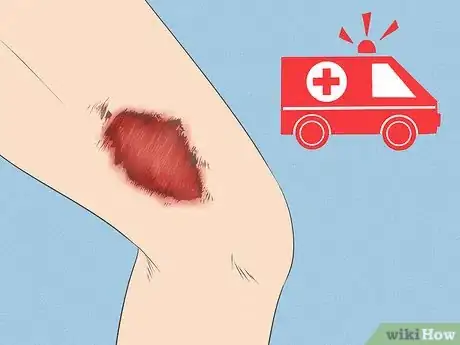
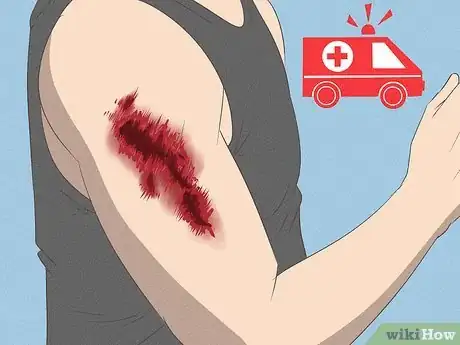
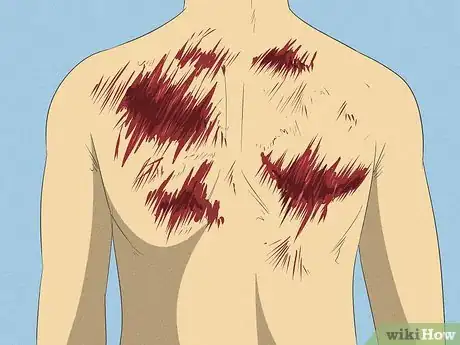


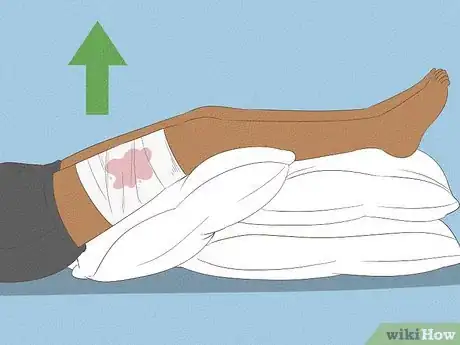
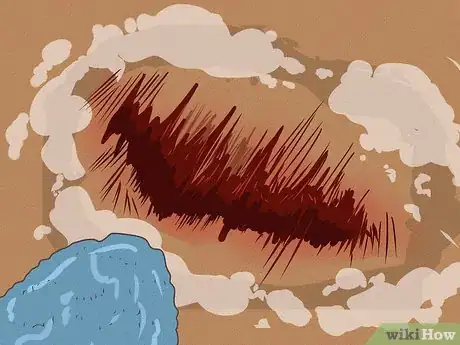
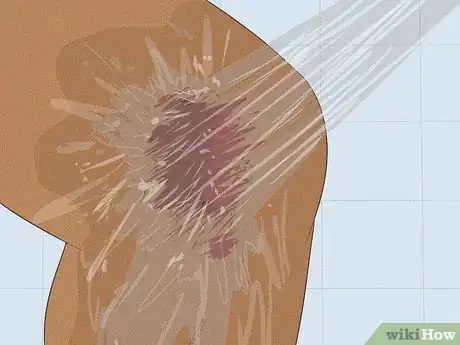
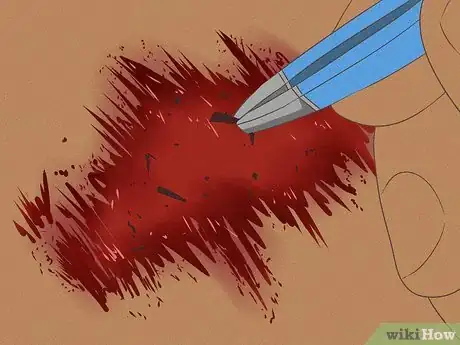
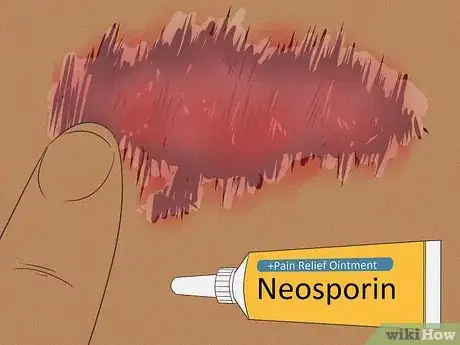
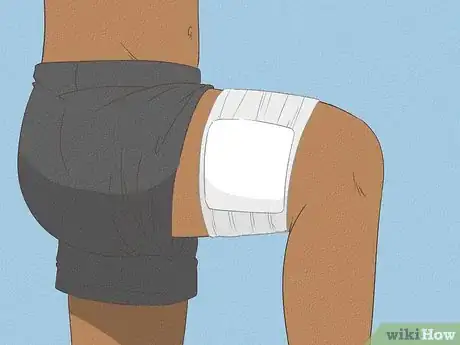

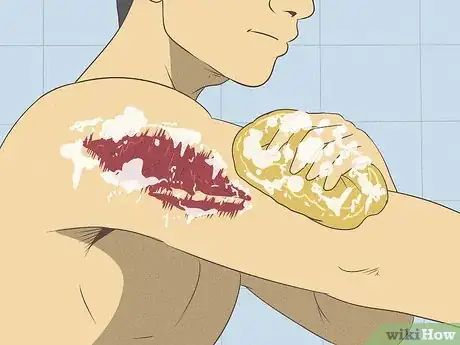
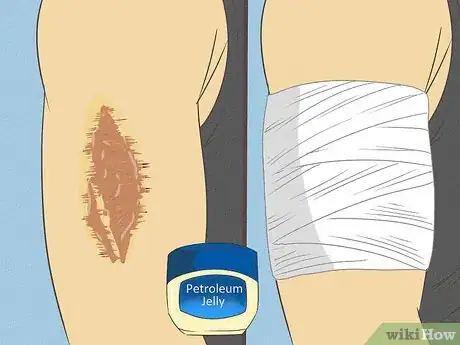
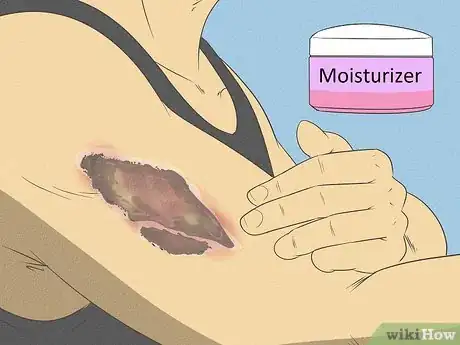
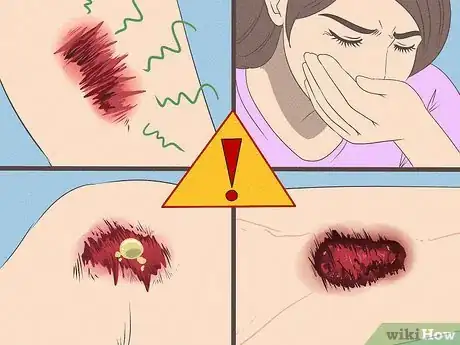


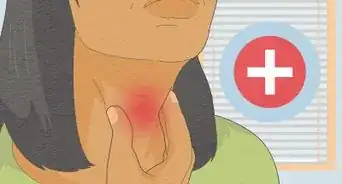
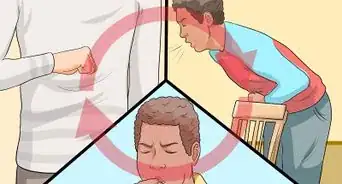

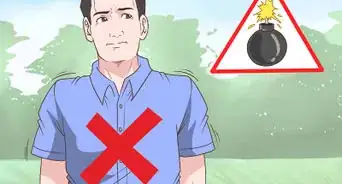
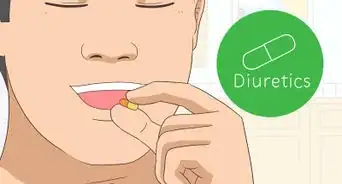




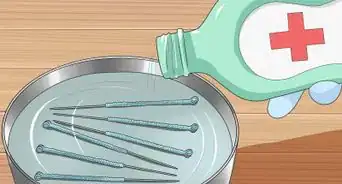











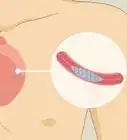
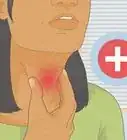




































Medical Disclaimer
The content of this article is not intended to be a substitute for professional medical advice, examination, diagnosis, or treatment. You should always contact your doctor or other qualified healthcare professional before starting, changing, or stopping any kind of health treatment.
Read More...